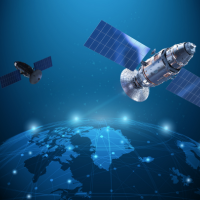From digital age Nowadays, internet access has become a basic need to support quality education. However, for many schools in remote and isolated areas, internet connection is still a big challenge. Limited cable or cellular network infrastructure makes it difficult for schools in this area to connect to the digital world. This is where the important role of satellite internet comes as a solution, opening access education quality for students in various corners, regardless of geographic location.
1. Providing Access to Global Information and Learning Resources
Satellite internet allows schools in isolated areas to connect with resources education global. Students and teachers can access various online learning materials, learning videos, courses and modules from leading educational institutions. Access to resources like these helps students gain greater knowledge, enriches their learning experience, and prepares them to compete in an increasingly digital world. With satellite internet, geographical boundaries are no longer a barrier to learning from sources that previously could only be accessed by schools in urban areas.
2. Supports Distance Learning and Virtual Collaboration
Distance learning has increasingly become an integral part of education, especially since the COVID-19 pandemic. For schools in remote areas, satellite internet allows students and teachers to connect virtually with institutions or teachers outside their area. Students can follow along online classes, collaborate with students at other schools, and even attend seminars or training held by national or international institutions. With a stable internet connection, schools in isolated areas can take advantage chance which, like schools in big cities, encourages collaboration and the fruitful exchange of ideas.
3. Minimizing the Digital Divide and Educational Equality
The digital divide is one of the problems that impacts the quality of education in isolated areas. While students in cities have access to the internet and various digital technologies, students in remote areas are often left behind due to limited access. With satellite internet, schools in isolated areas can get the same opportunity to learn using technology, increasing literacy digital, and prepare students to face the digital era. Equality in access to education is an important step to create a generation that is better prepared to face future challenges.
4. Provide Training for Teachers and Professional Development
It's not just students who benefit from satellite internet, but also teachers. With adequate connections, teachers in remote schools can take part in online training, seminar, and professional development courses that help them improve their teaching abilities. Teachers can learn about the latest teaching methods, use technology in the classroom, and interact with colleagues around the world. With wider access to training, teachers can deliver more learning effective, innovate in the classroom, and provide a more meaningful learning experience for students.
5. Facilitate a more efficient school administration and management system
Internet Satellites also play a role in increasing the efficiency of school administration systems. With a stable internet connection, schools can manage data, report information to the education office, and access an integrated administration system. This speeds up the work process, reduces dependence on physical delivery of documents, and ensures school data is properly recorded.
As one of the official distributors Starlink, Thrive is ready to support schools in remote areas to get fast and stable internet access via satellite technology. With this solution, Thrive helps open wider access to education, supports student development, and reduces the digital divide for schools in isolated areas.
Don't let geographical limitations hinder educational progress! Contact Thrive today for a satellite internet solution for your school, and help your students and teachers access a seamless digital world.




























 Industrial Robotics Integration
Industrial Robotics Integration
 IT Outsourcing Service
IT Outsourcing Service
 Secure Internet SD-WAN Connection
Secure Internet SD-WAN Connection
 Digital Marketing Service
Digital Marketing Service









